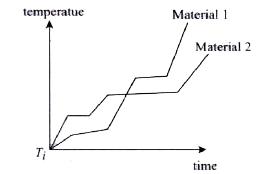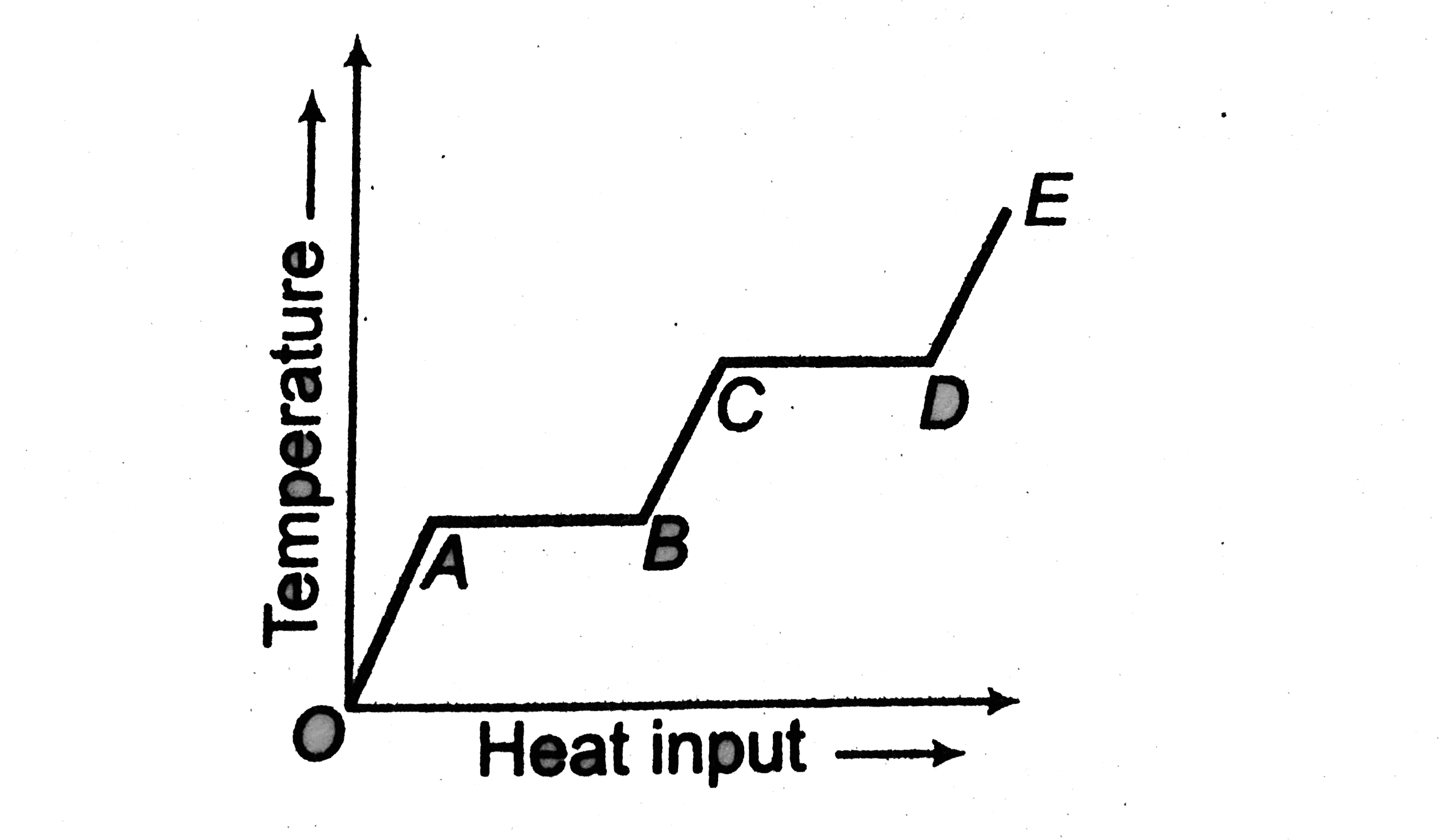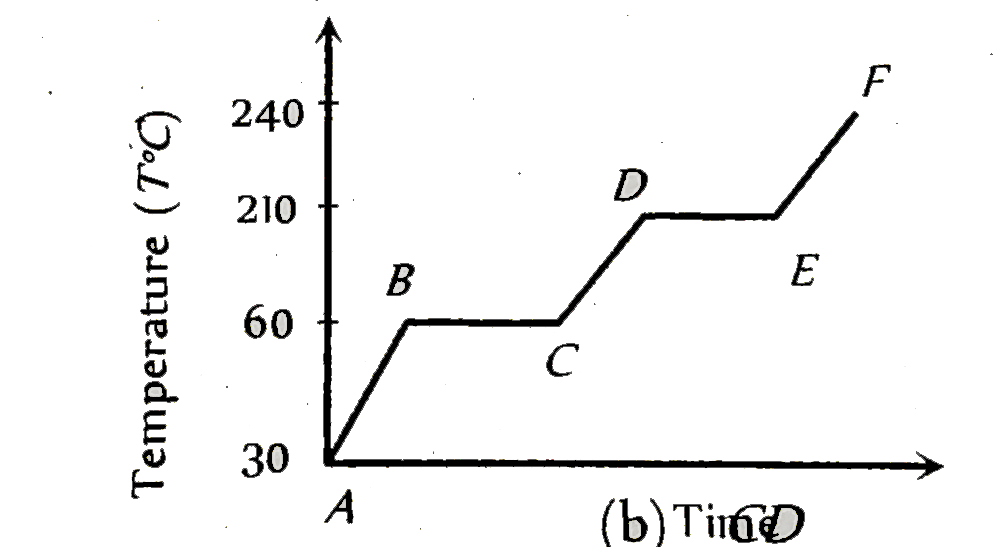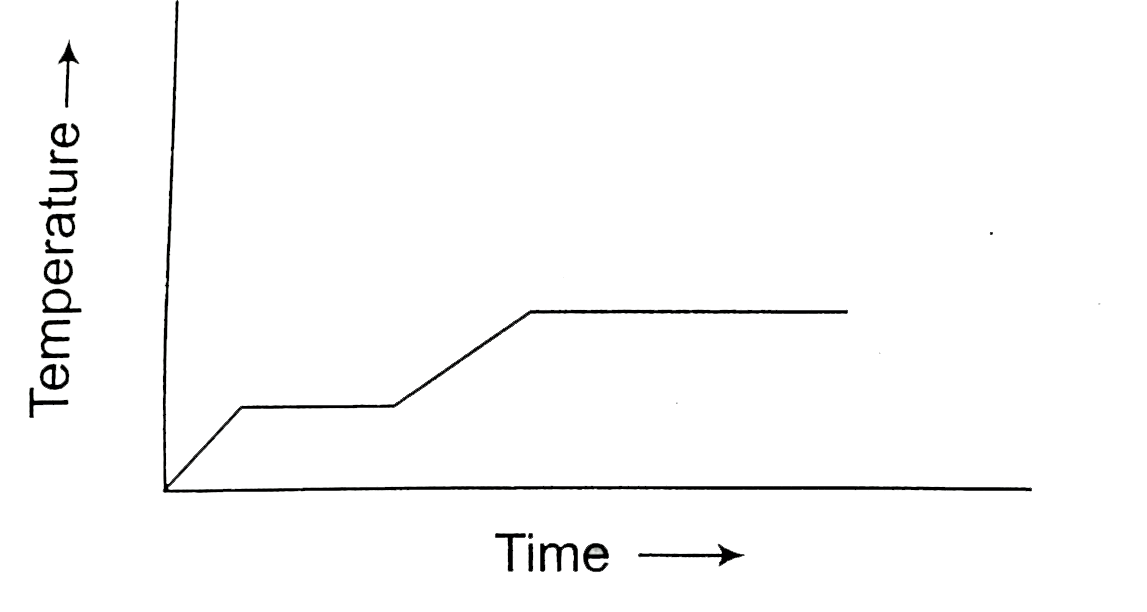Two solid blocks having same mass but different material are supplied heat at a constant rate. They have same initial temperature. The graph between temperature and time is shown.

Answer the following questions on the basis of information given in the above statement.
Which material has higher specific heat capacity in liquid state?
Material 2
Topper's Solved these Questions
- HEAT AND TEMPERATURE Book:CENGAGE PHYSICSChapter:HEAT AND TEMPERATURE Exercise:CONSOLIDATED EXERCISE (Multiple Choice Questions with one or More than One Correct Answer)
Explore 4 Videos
- HEAT AND TEMPERATURE Book:CENGAGE PHYSICSChapter:HEAT AND TEMPERATURE Exercise:CHALLENGING EXERCISE
Explore 5 Videos
- HEAT AND TEMPERATURE Book:CENGAGE PHYSICSChapter:HEAT AND TEMPERATURE Exercise:MANDATORY EXERCISE (Exercise Set III)
Explore 29 Videos
- HEAT AND MECHANICAL ENERGYBook:CENGAGE PHYSICSChapter:HEAT AND MECHANICAL ENERGYExercise:Olympiad and NTSE Level Exercises
Explore 7 Videos
- LASERSBook:CENGAGE PHYSICSChapter:LASERSExercise:OLYMPIAD AND NTSE LEVEL EXERCISES
Explore 1 Video
Similar Questions
Two solid blocks having same mass but different material are supplied heat at a constant rate. They have same initial temperature. The graph between temperature and time is shown.

Answer the following questions on the basis of information given in the above statement.
Which material has higher specific heat capacity in solid state?
View SolutionTwo solid blocks having same mass but different material are supplied heat at a constant rate. They have same initial temperature. The graph between temperature and time is shown.

Answer the following questions on the basis of information given in the above statement.
Which material has higher specific heat capacity in gaseous state?
View Solution
Knowledge Check
A solid material is supplied heat at a constant rate. The temperature of material is changing with heat input as shown in the figure. What does the slope of DE represent ?
 ALatent heat of liquidBLatent heat of vaporizationCHeat capacity of vapourDInverse of heat capacity of vapour
ALatent heat of liquidBLatent heat of vaporizationCHeat capacity of vapourDInverse of heat capacity of vapourA solid substance is at 30∘C . To this substance heat energy is supplied at a constant rate. Then temperature versus time graph is as shown in the figure. The substance is in liquid state for the portion (of the graph)
 ABCBCDCEDDEF
ABCBCDCEDDEFTwo substance of same size are made of same material but one is hollow and the other is solid. They are heated to same temperature, then
ARate of heat radiation in solid is moreBRate of heat radiation in hollow is moreCRate of heat radiation in both are equalDDepends on mass of the sphere
Two solid blocks having same mass but different material are supplied heat at a constant rate. They have same initial temperature. The graph between temperature and time is shown.

Answer the following questions on the basis of information given in the above statement.
Which material has higher latent heat of vaporisation?
View SolutionTwo solid blocks having same mass but different material are supplied heat at a constant rate. They have same initial temperature. The graph between temperature and time is shown.

Answer the following questions on the basis of information given in the above statement.
Which material has higher latent heat of fusion?
View SolutionA solid material is supplied heat at a constant rate. The temperature of material is changing with heat input as shown in the figure. What does the slope of DE represent ?

View SolutionTwo metallic blocks P and Q having masses in ratio 2 : 1 are supplied with the same amount of heat. If their temperatures rise by same degree, compare their specific heat capacities.
View Solution
Heat is supplied to a certain homogeneous sample of matter, at a uniform rate. Its temperature is plotted against time, as shown Which of the following conclusions can be drawn?
(i) Its specific heat capacity is greater in the solid state than the liquid state.
(ii) Its specific heat capacity is greater in the liquid state than in the solid state.
(iii) Its latent heat of vaporization is greater than its latent heat of fusion.
(iv) Its latent heat of vaporization is smaller than its latent heat of fusion
View Solution
